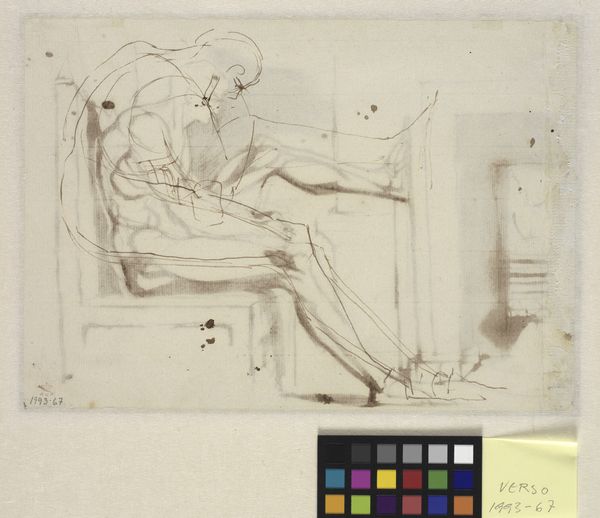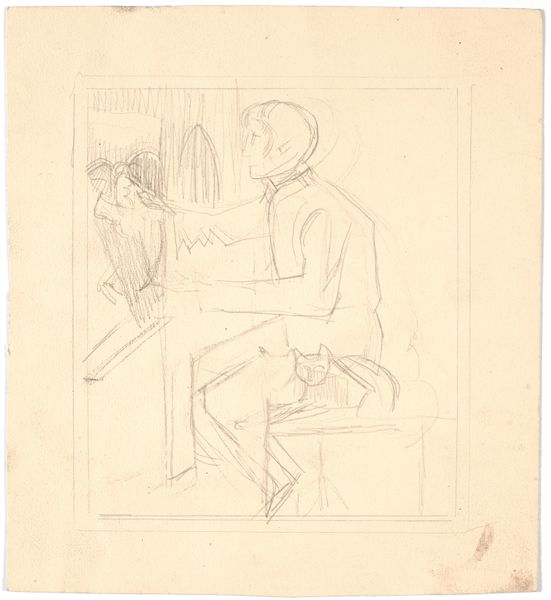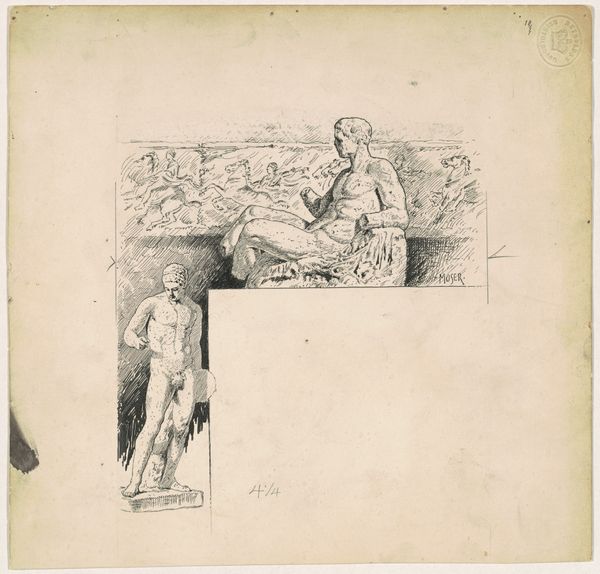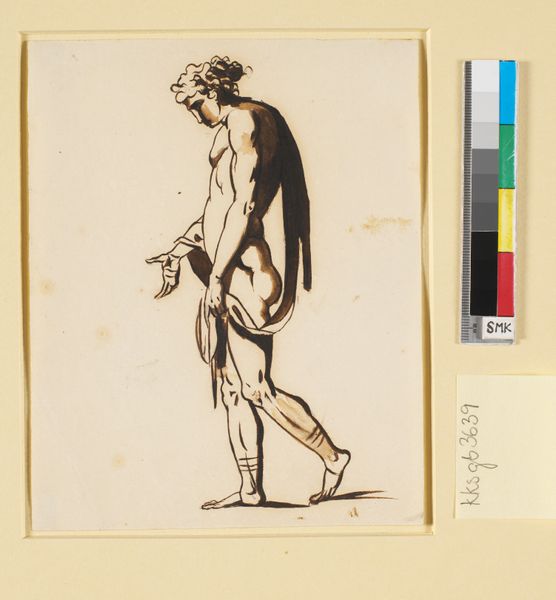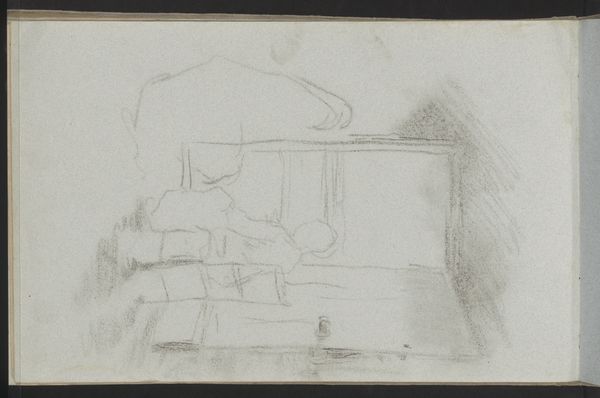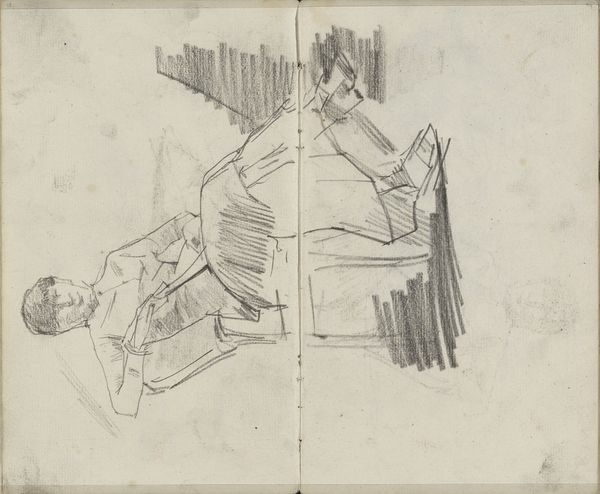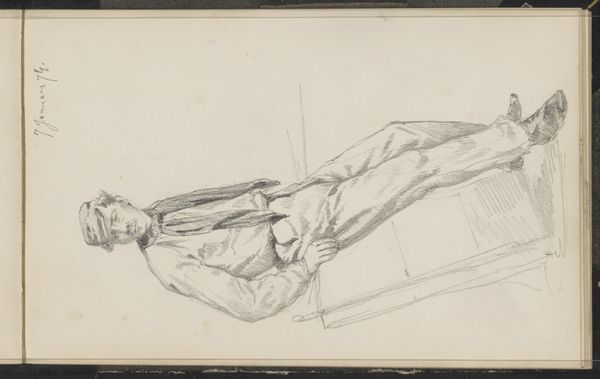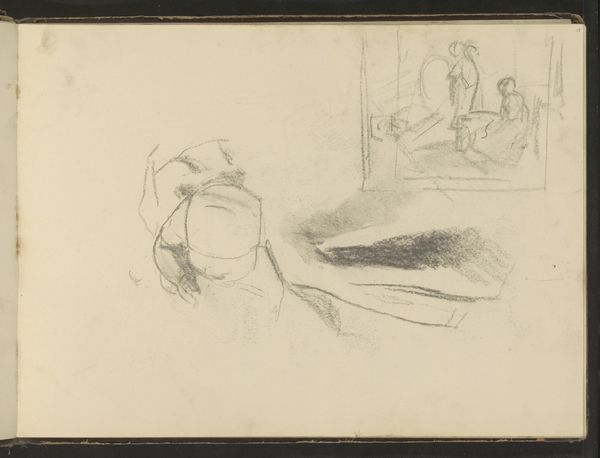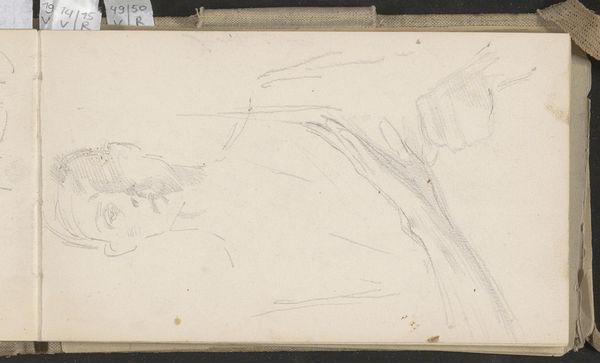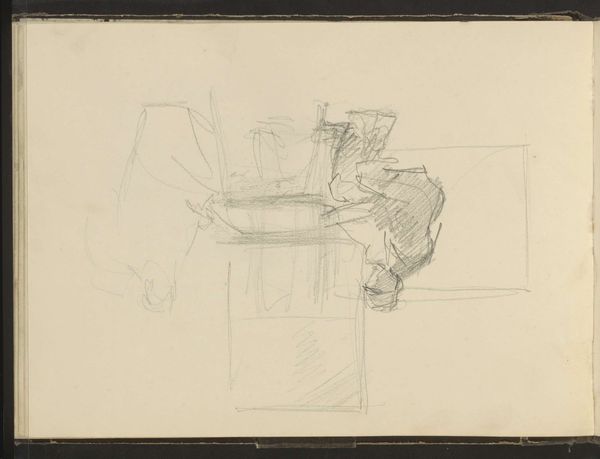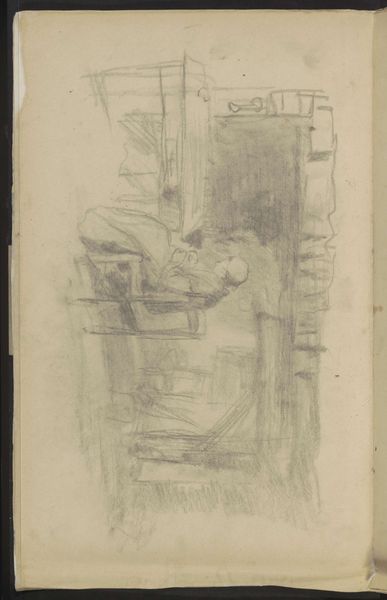
Sitting man with his right foot on a chimneypiece 1787 - 1790
0:00
0:00
Dimensions: 200 mm (height) x 279 mm (width) (bladmaal)
Editor: This is Johann Heinrich Füssli’s "Sitting Man with his Right Foot on a Chimneypiece", created between 1787 and 1790 using ink. The starkness of the ink and the rather contorted pose create a real feeling of unease for me. What do you see in this piece? Curator: It’s that unease that I find so compelling! Füssli was working during a period of enormous upheaval; think of the French Revolution brewing. Look at the figure’s posture; he's not relaxing, is he? He's perched, almost defensively, foot braced against what appears to be a chimneypiece. It speaks to the precariousness of power, the fragility of the established order, doesn't it? How does that relationship to societal and personal disquiet manifest, visually? Editor: Well, the stark, almost violent lines, create tension and drama. And I guess that the nakedness makes him vulnerable, despite his physical strength. Curator: Precisely. Nudity wasn’t just about classical ideals for Füssli. Stripping away clothing strips away societal markers, forcing us to confront the raw, exposed self. Consider this work alongside Füssli’s depictions of nightmares, or even think about how issues of power and surveillance were developing at this point in history, issues about what can be seen, or not seen, in a body. Editor: That’s really interesting, I hadn't considered those aspects. It’s more than just an exercise in anatomy; it's a commentary on the anxieties of his time. Curator: Exactly! Art doesn't exist in a vacuum. It’s a reflection, and sometimes a prophecy, of the social and political landscape. I wonder if Füssli thought his image was prophecy? Editor: I will keep that in mind. It offers an incredibly interesting perspective on his art. Thank you.
Comments
No comments
Be the first to comment and join the conversation on the ultimate creative platform.
